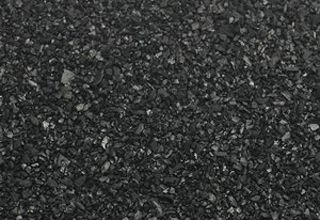Coconut Based Activated Carbon
Coconut shell activated carbon comes from the coconut shell. To create its activated carbon form, the coconut undergoes a steam activation process. During activation, it creates millions of pores at the surface of the carbon thus increasing the total surface area. Coconut shell carbon has mainly micro-pores to meso-pores and due to its unique distribution of pore diameter, coconut shell activated carbons are very popular in the gas phase purification and potable water purification industries.
Request an Activated Carbon quote
Activated Carbon Quote Request
View additional options:
Regular Granular Coconut Shell Carbon
| Model | Activated Carbon Type |
|---|---|
| Mesh Size (US Sieve) | 4x8 / 6x12 / 8x16 / 8x30 / 12x40 / 20x50 |
| Iodine (mg/g) Minimum | 800/850/900/950/1000/1050/1100/1150/ 1200/1250/1300 |
| CCL4/CTC (%) Minimum | 50 / 55 / 60 / 65 / 70 / 75 / 80 |
| Surface Area (m2/g) | 850-1350 |
| Apparent Density (g/cc) | 0.40-0.54 |
| Hardness (%) Minimum | 95 / 96 / 97 / 98 / 99 |
| Ash Content (%) Maximum | 5 |
| Moisture (%) Maximum | 5 |
| pH | 9.5 - 11 |
Water Washed Granular Coconut Shell Carbon
| Model | Activated Carbon Type |
|---|---|
| Mesh Size (US Sieve) | 4x8 / 6x12 / 8x16 / 8x30 / 12x40 / 20x50 |
| Iodine (mg/g) Minimum | 800/850/900/950/1000/1050/1100/1150/ 1200/1250/1300 |
| CCL4/CTC (%) Minimum | 50 / 55 / 60 / 65 / 70 / 75 / 80 |
| Surface Area (m2/g) | 850-1350 |
| Apparent Density (g/cc) | 0.40-0.54 |
| Hardness (%) Minimum | 95 / 96 / 97 / 98 / 99 |
| Ash Content (%) Maximum | 3 |
| Moisture (%) Maximum | 2 |
| pH | 8-9.5 |